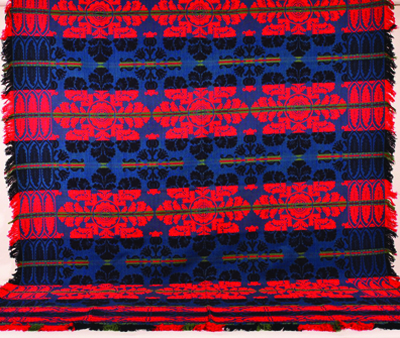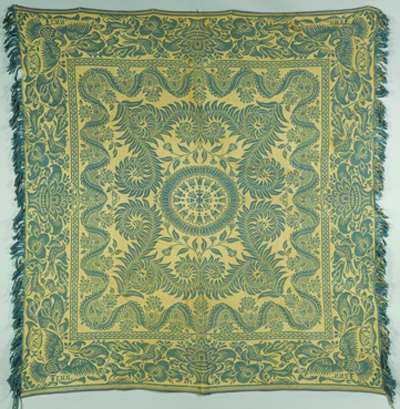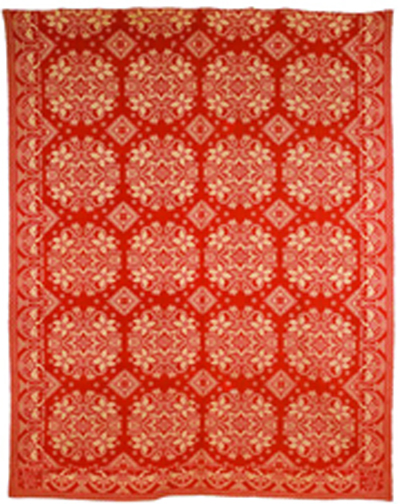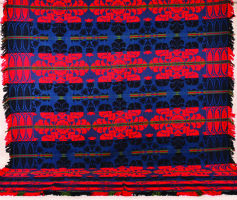
IOLA, Wis. – How does a coverlet differ from a quilt? They may have served the same function, and they can add punch to a bland decor, but the ways in which they were created were actually very different. Here are 10 things to know about woven coverlets.
1. Coverlets – woven bedcovers – came into popularity in the early 19th century in the United States and were more common than quilts during this time period.
2. These woven items were often made of cotton and wool, and in many instances people would bring their request for a coverlet to a local weaver to be constructed.
3. In the early 1800s, French inventor Joseph Marie Jacquard designed an attachment that would fit on a loom, allowing for more intricate designs to be incorporated in a coverlet. The attachment reportedly saved time and money, and utilized a punch card process.

4. In January 2011, Pook and Pook Inc. sold an uncommon red and white jacquard coverlet (shown at top of page) with an eagle border, constructed by Garret William Van Doren in 1836. The coverlet commanded $2,430 (with buyer’s premium).
5. In the early-to-mid 19th century, a jacquard coverlet could be purchased for anywhere from $2 to $15 (depending on size and design).
6. The National Museum of the American Coverlet is located in Bedford, Pennsylvania. The museum’s holdings include an extensive collection of coverlets, along with a display of weaving devices. The Museum regularly offers classes in textile making. (www.coverletmuseum.org)

7. In America, the practice of making coverlets using jacquard looms and similar devices began to fade during the fourth quarter of the 19th century. The import of cheaper materials into the U.S. became a difficult hurdle for weavers to overcome.
8. Some of the factors that impact the value of antique coverlets sold on the secondary market today include condition, family provenance or origin of the maker, intricacy of details and pattern.
9. Few jacquard looms still exist today, but at the Shelburne Museum in Shelburne, Vermont, there is a scarce 1890s jacquard loom featured in an exhibition of barn-frame looms (www.shelburnemuseum.org).
10. A four-color, two-part jacquard coverlet, with a floral center and geometric border, made in Lancaster County, Pennsylvania, and signed “J. Brosey, (Manheim) E. Danner 1848,” realized $2,178 in November 2015, when it was brought to auction by Conestoga Auction Co. — a division of Hess Auction Group.
___
By ANTOINETTE RAHN, Antique Trader
Sources: www.colonialsense.com;
www.drloriv.com; www.liveauctioneers.com;
www.shelburnemuseum.org;
www.coverletmuseum.org
For more information about Antique Trader Magazine, visit the website www.antiquetrader.com .



